World 🢖 Australia and Oceania 🢖 Melanesia 🢖 Papua New Guinea
Sinkholes 🢔 Caves 🢔 Geological wonders 🢔 Categories of wonders
Wonder
Naré sinkhole
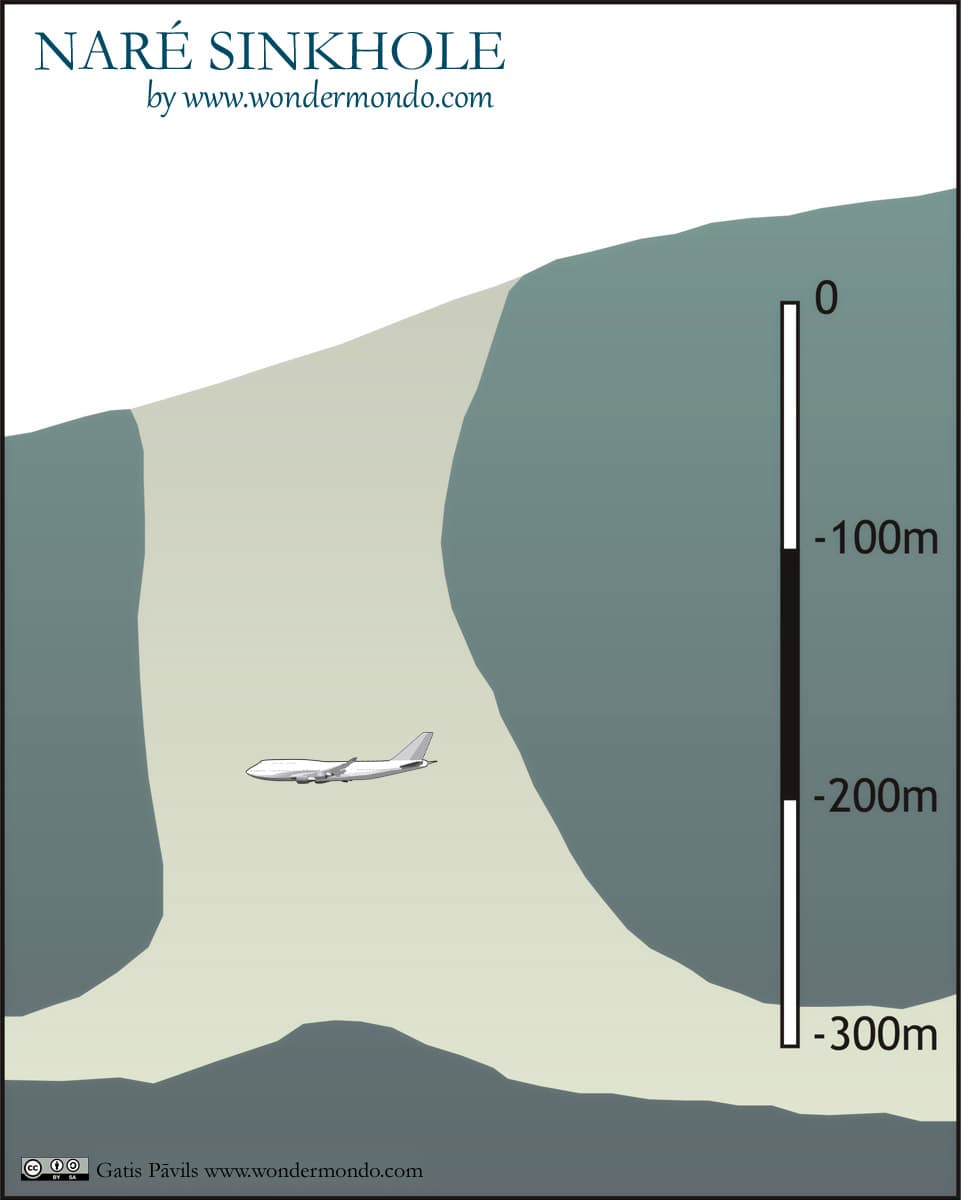
 In short
In short
Next to the giant Minyé sinkhole another well known giant hole in Nakanai Mountains is Naré sinkhole. Below it there is flowing one of the most powerful underground rivers of the world.
 46.3%
46.3%
GPS coordinates
Location, address
Alternate names
Depth of sinkhole
Depth of cave
Map of the site
If you see this after your page is loaded completely, leafletJS files are missing.
 In detail
In detail
Holes in Nakanaï Mountains
The exotic island of New Britain has many natural wonders – volcanoes, geysers, numerous endemic animals, and plants. But unsurpassed wonders hide in Nakanaï Mountains – up to 2,185 m high mountains in the central-eastern part of the island. The total area of these mountains is 5,500 km².
Equatorial climate leads to nearly constant rain in the central part of Nakanai, helping to sustain a dense cover of rainforest. Even nearly vertical cliff faces here are covered with dense jungle. Intense biochemical processes in the soil of rainforests create lots of humic acids.
At the sea the precipitation is some 6,000 mm per year, but up in the mountains, it reaches 10,000 – 12,000 mm per year. Thus this location is one of the wettest in the world next to such well-known "wettest places of the world" as Cherapunji in India and Mount Waialeale in Hawai’i.
Nakanai mountains consist of a thick (up to 1.5 km) layer of Miocene limestone, Yalam formation. It is covered with fine Pliocene volcanic deposits. Volcanic deposits have been eroded, giving a possibility for karst processes to develop.
Geological structure, heavy rain, and abundant humic acid from rainforest cause intense karst processes here – possibly the most intense in the world. Process happening here in a way could be called – "hyperkarst", because the usual factors causing the karst processes here have been pushed to their extreme. These processes are made even faster by one of the fastest tectonic uplifts in the world (3 mm per year) taking place in this area of New Britain.
Troughout the last 200,000 years in Nakanai Mountains have formed eight giant canyons with a depth reaching 600 – 1,000 m. The upper reaches of these canyons and their side ravines contain some of the most powerful springs in the world – sometimes starting as large waterfalls starting from the caves. So – these by far are not common rivers: upper parts of these rivers are located deep under the limestone, in giant caves.
In some places in these caves formed enormous voids, which after some time collapsed. These collapsed voids are like giant holes with underground rivers deep below crossing their bottoms.
In Nakanai mountains have been found numerous such sinkholes (also called collapse dolines and – if they are REALLY large and with vertical walls – tiankengs) – some have just opened and represent a narrow opening above giant underground voids. Others represent giant wells with vertical walls and others have degraded – they just resemble enormous, jungle-covered depressions.
Sinkholes of Nakanai Mountains belong to the most impressive, "best" sinkholes of the world. Naré sinkhole is one of the visually most impressive sinkholes here.
Sinkhole
Naré sinkhole looks like a giant hole in the green jungle. This hole is nearly round, 150 m long, and 120 m wide. Depth of sinkhole is 240 – 310 m, volume is 4.7 million m³.
Walls of the sinkhole are vertical and even overhanging – thus they are not covered with jungle. Below, at the bottom of the sinkhole though is a patch of rainforest.
Temperature in the sinkhole is above 30°C and humidity are very high. At certain conditions, though the air in the sinkhole is somewhat cooler than outside, and there form thick clouds at the upper part of this weird, giant hole.
All of the limestone, which earlier filled the present hole, has been washed down the mountains by a subterranean river, named Vaisseau Fantôme river (Flying Dutchman river), flowing across the bottom of the sinkhole. The volume of this river is some 15 – 20 m³, while after heavy rains the discharge can be even 50 times higher.
French explorers descended into this hole in 1978 and 1980, exploring cave passages up to 2 km in length. British speleologists continued their work in 1986. Naré caves belong to the technically most difficult caves to explore. The mighty subterranean river here is extremely loud – the noise in cave passages is like standing next to a reactive airplane and there are needed special earplugs to endure this exploration.
Local communities see a possibility to earn money from expeditions willing to visit Naré, asking for even 6,000 EUR equivalent. From one side this might seem ridiculous, as explorers have spent a wealth just to come here and to install the necessary equipment. From the other side – this might be the beginning of a deal between local people and outsiders. Everyone should be interested to keep this natural wonder possibly intact – and a good price for a visit to it would deter casual people, while for local people this would show the true value of virgin nature.
References
- Waltham T. Tiankengs of the world, outside China, Speleogenesis.info. Accessed 24.07.10.
- David W. Gill. Untamed River Expedition, 1988. Chinley Derbyshire UK.
Naré sinkhole is included in the following article:
 Linked articles
Linked articles
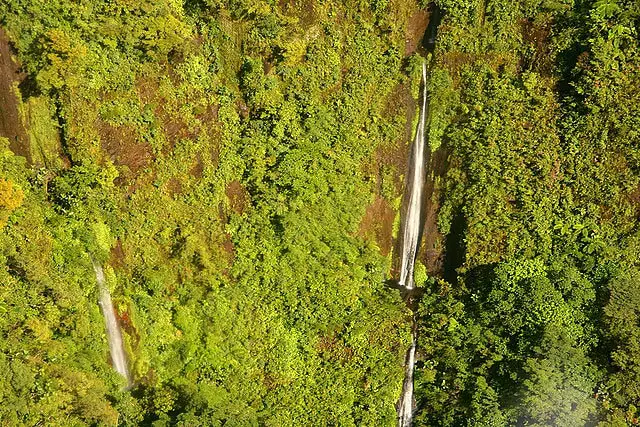
Wonders of Papua New Guinea
One of the most exciting and mysterious lands in the world is Papua New Guinea. This country takes half of the second-largest island and numerous other larger and smaller islands. Up to this day, Papua New Guinea is poorly investigated, and here are expected numerous exciting discoveries of geological, biological, and archaeological nature.
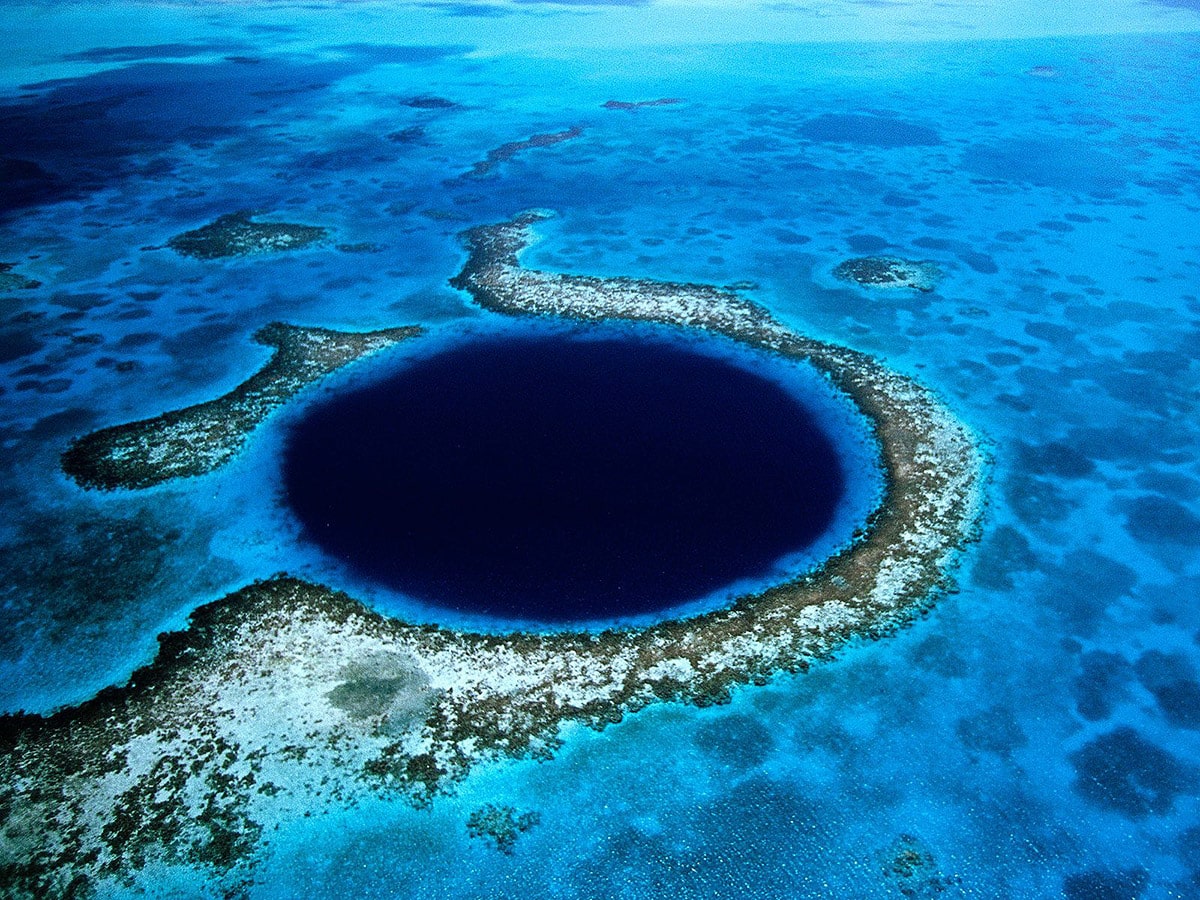
Sinkholes
This category includes outstanding sinkholes – large natural depressions or holes, which for most the part represent collapsed caves.
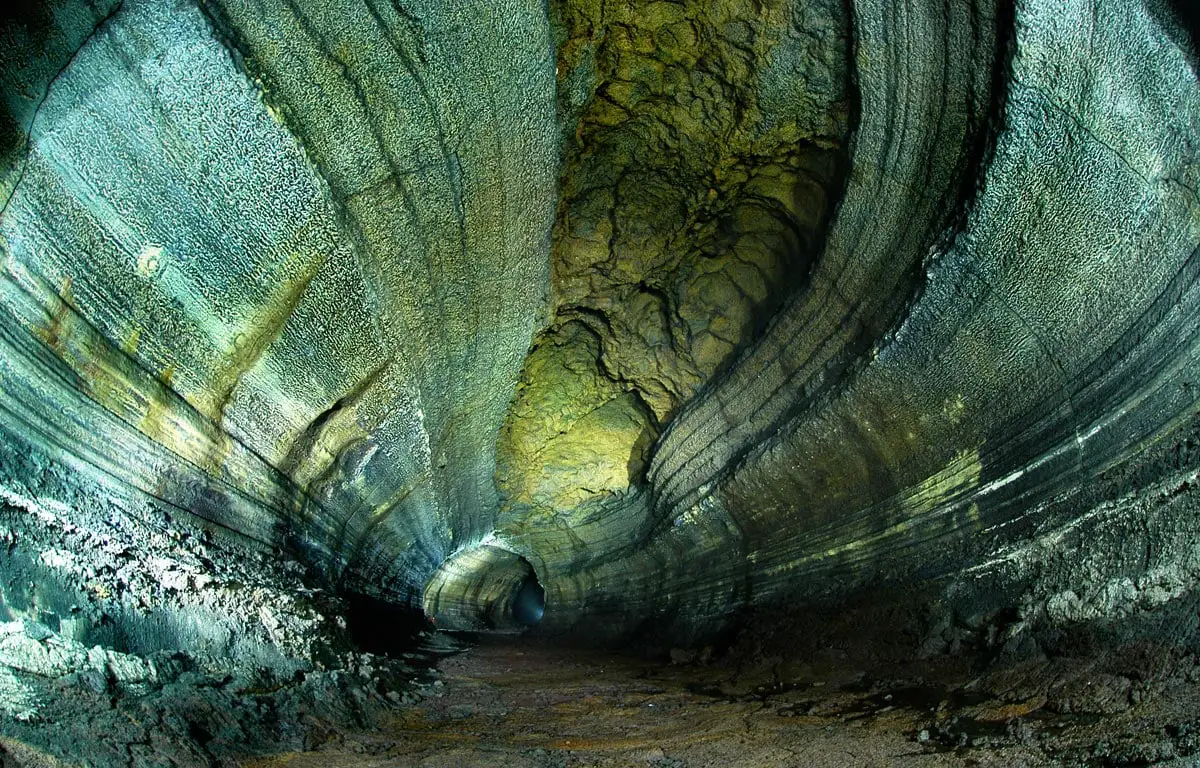
Caves
Every year there are reported exciting discoveries of new caves and discoveries of new qualities such as cave paintings in the ones known before. But there still is a feeling that our knowledge covers just a small part of all these monuments of nature.
Though, those which are known to us, offer a surprising diversity of unusual features and impressive sights.
 Recommended books
Recommended books
Caves: Exploring Hidden Realms
A companion volume to the new IMAX film offers a sumptuously illustrated, close-up look at the world’s great cave environments, capturing the wonders and perils of caving and describing the unique characteristics of these underground habitats.
Encyclopedia of Caves
Encyclopedia of Caves is a self-contained, beautifully illustrated work dedicated to caves and their unique environments. It includes more than 100 comprehensive articles from leading scholars and explorers in 15 different countries. Each entry is detailed and scientifically sound, yet accessible for students and non-scientists.

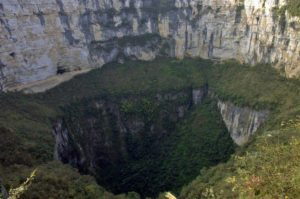


The reference is wrong: Should read David Willaim Gill.1988. The Untamed River Expedition. Chinley Derbyshire UK.
Corrected this – and many thanks for checking out the page!